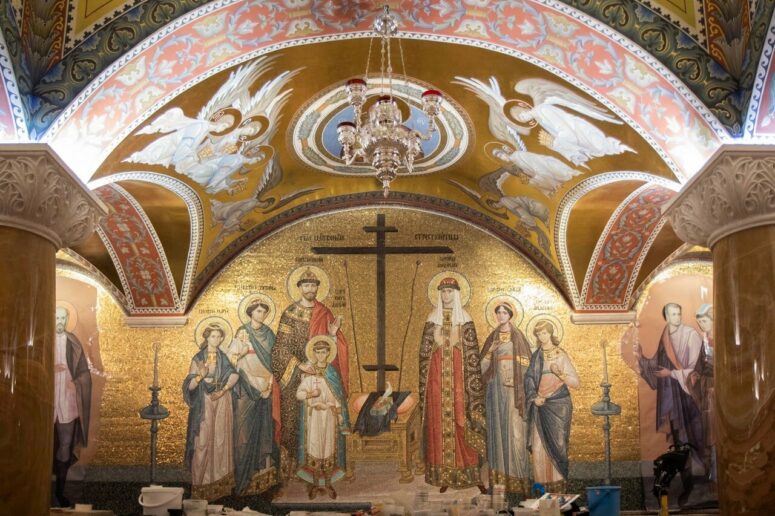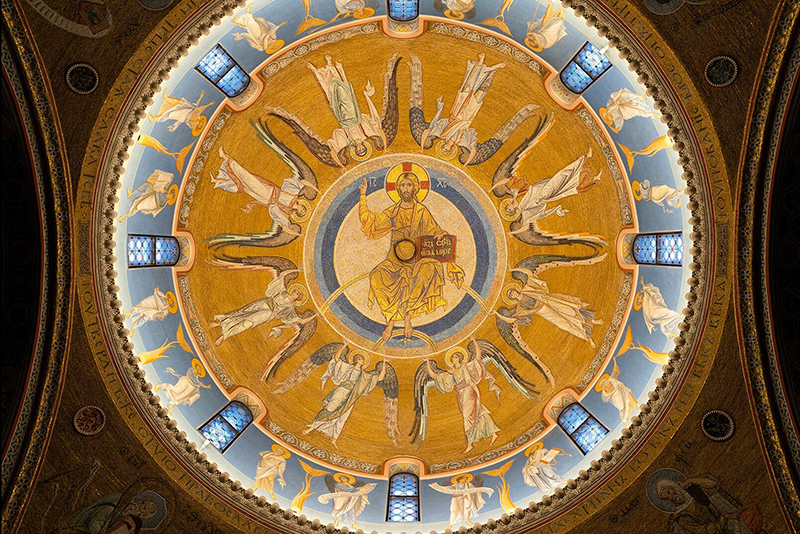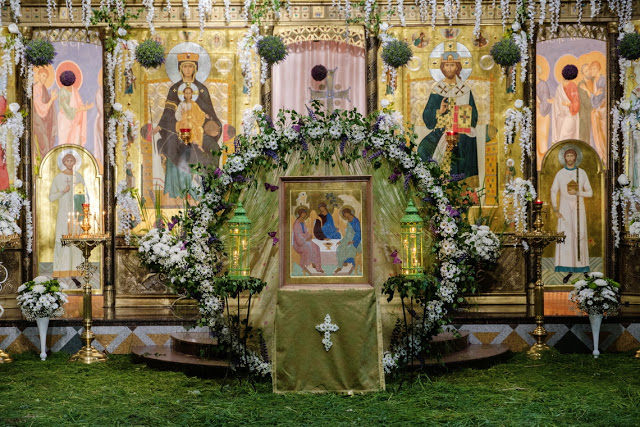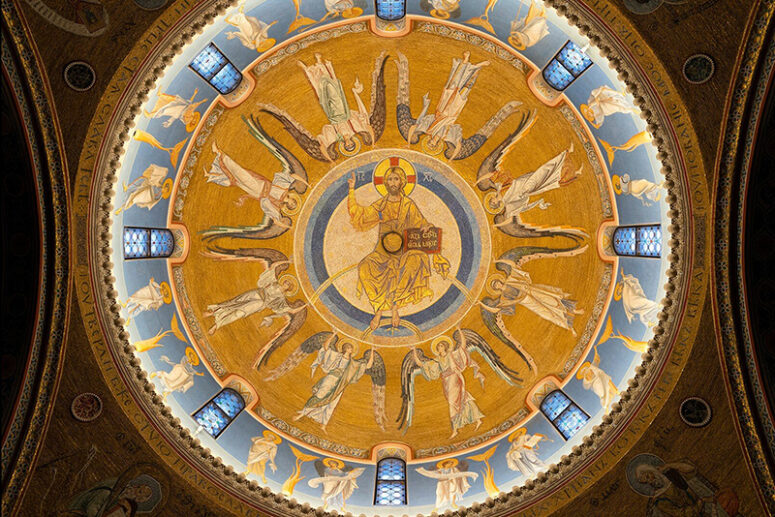
Everyone entering the Sovereign Church of St Elisabeth Convent for the first time will be struck by the majestic beauty of its opalescent vaults. The interior of the church, decorated with mosaics, is the result of the long and meticulous work of the Convent’s mosaic artists. The mosaic images, made in accordance with Byzantine traditions, resemble the interior decoration of the churches of Constantinople and St Sophia Cathedral in Kiev.
It seems like the golden glow of smalt on the domed vaults carries a reflection of eternity, conducting the Divine light of heaven in our temporary world. Mosaic, as a symbol of eternity, is not just a metaphor. Its property to retain its original form for thousands of years is provided by materials and the ancient technique, both remaining unchanged for centuries. This makes the modern mosaicists our guides into the world of art, whose history is rooted in antiquity and is closely associated with the birth of Christian arts.
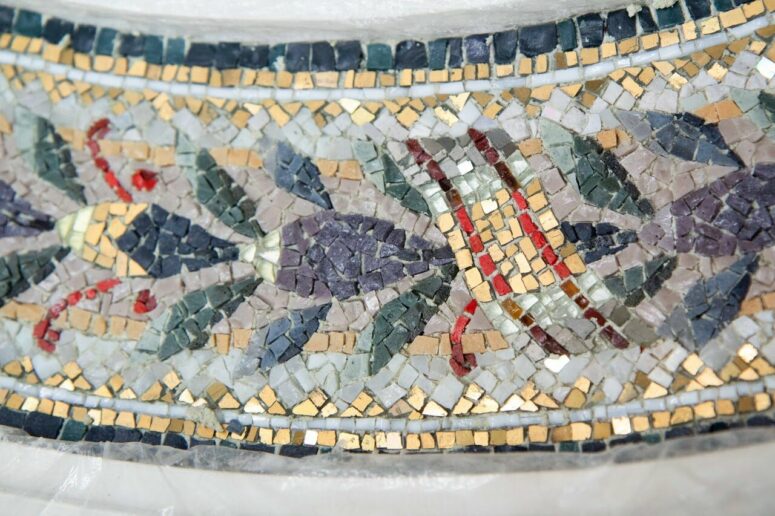
A Brief Introduction to Byzantine Mosaic
Byzantine mosaic, as part of the cultural heritage of the Roman Empire, was primarily a form of church art. It began to be used as a technique for creating a holy image, even earlier than icon painting. The most ancient mosaic images surviving to this day date back to the 3rd-4th centuries.
The material used in laying out mosaics is called smalt. Smalt was also developed in Byzantium by melting glass with metal oxides (gold, mercury, or copper) added in different proportions. This process created a rich palette of colors, enabling an artist to lay out any image in the smallest detail. Smalt does not fade or deteriorate with age. The image retains its original shades throughout its existence. A similar technology is used for its production to this day.
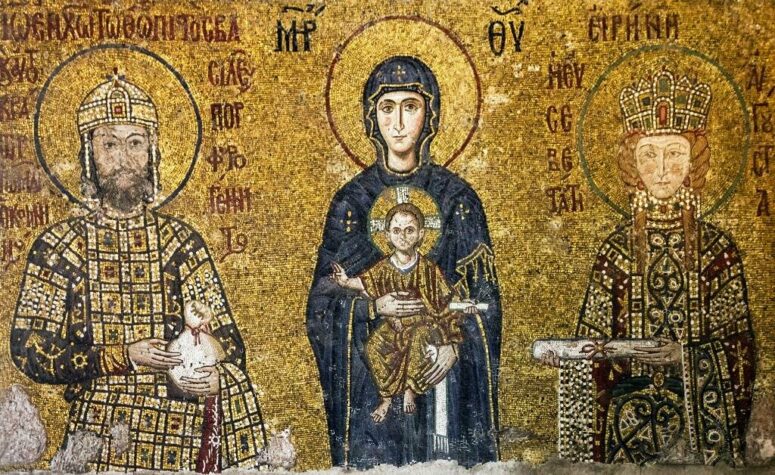
Images made of smalt are not realistic, but rather conventional and monumental, intended to convey the greatness of the Kingdom of Heaven.
Mosaics were often used for decorating the entire church interior, including domes, walls and vaults. The large scale images occupied areas, tens of square meters large. Each particle of smalt has a unique uneven surface, causing the image to flicker, when light hits it, and giving the mosaic its vibrant look. The features of Byzantine mosaics also include the use of a gold background and creating clear outlines for the elements of an image.
Modern Mosaic
Today the traditions of the ancient Byzantine art are continued by the workshop of St Elisabeth Convent. Besides the Convent itself, their mosaics can be seen in many churches in Belarus, Russia, Ukraine, Greece, Montenegro, and other countries, including even South Africa.
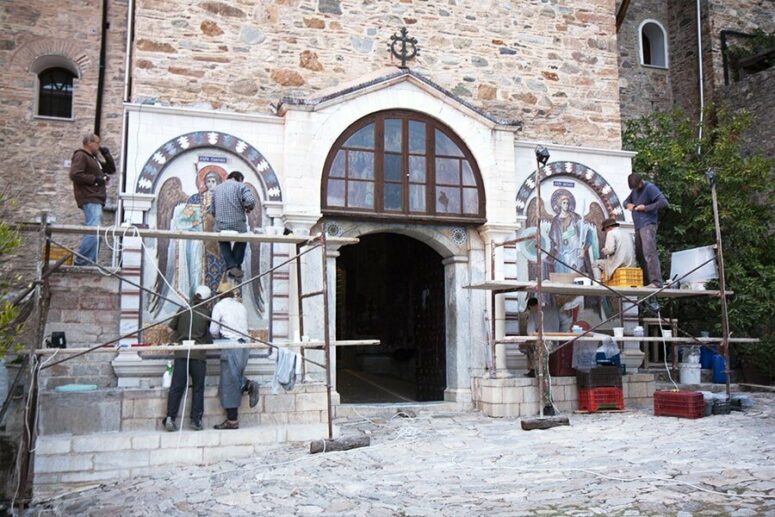
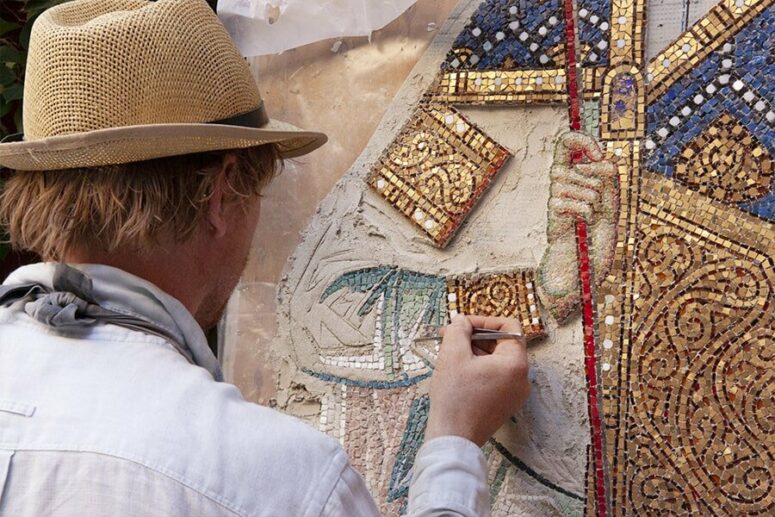
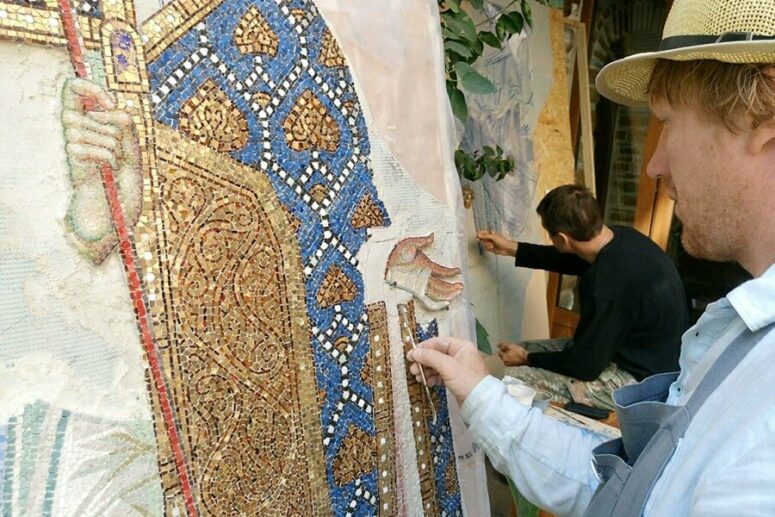
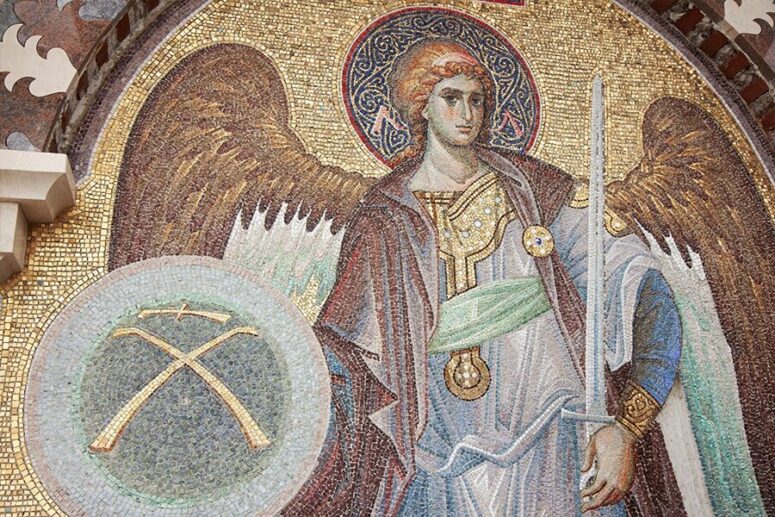
The smooth operation of the workshop is provided with joint efforts. A mosaic begins with the development of a sketch, which is then printed in full size. The outlines of the future image are then laid out using pieces of smalt, crushed with a specialized tool and adjusted to match the required size and shape. The work is divided between several mosaicists, each responsible for his own area (vestments, facial images, backgrounds etc.)
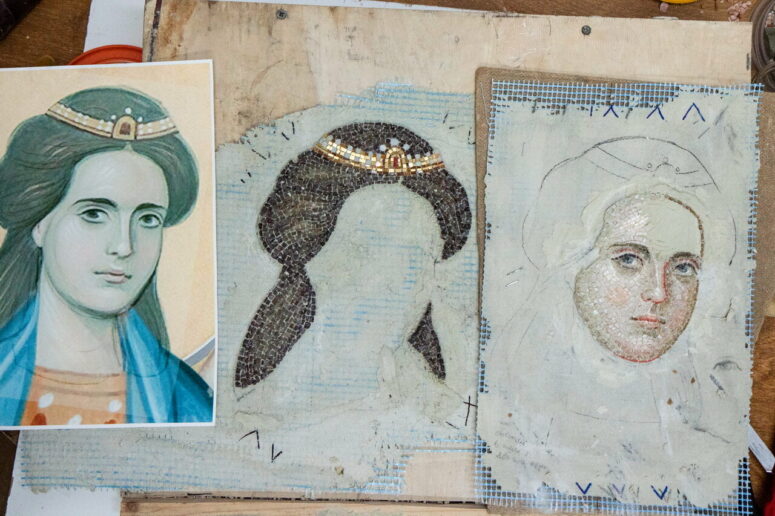
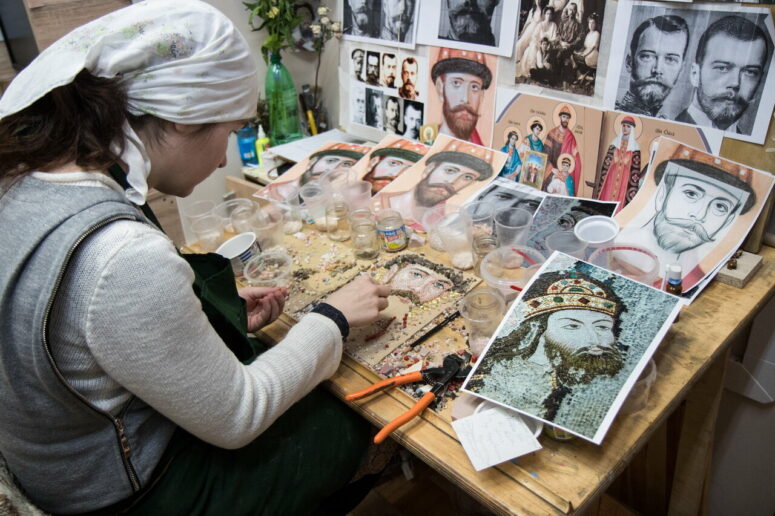
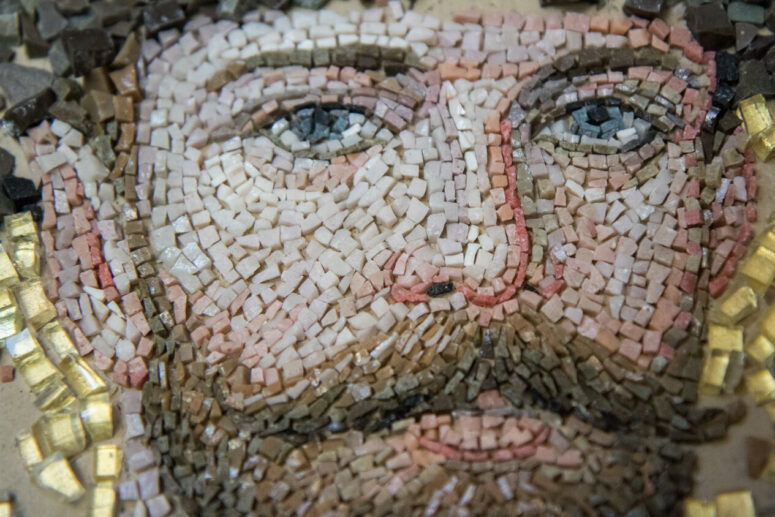
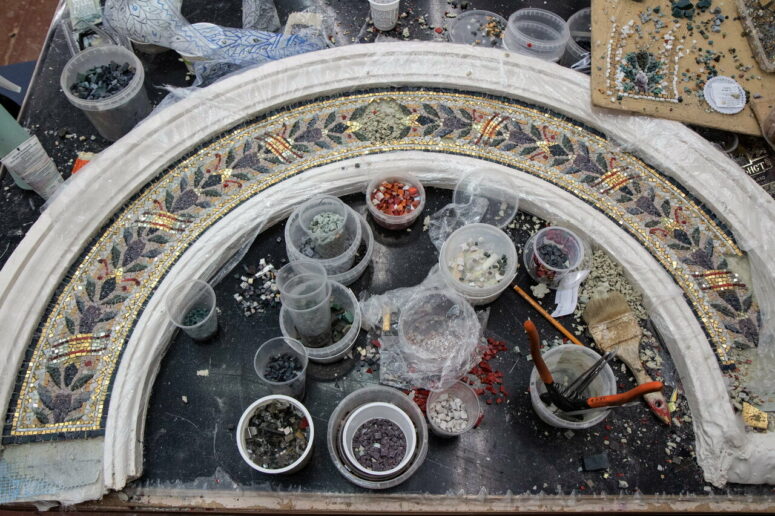
The individual pieces are first laid out on plasticine with the help of tweezers. Then, after the color palette of each image is adjusted, it becomes transferred onto a special-purpose mortar called lime gesso. Since ancient times, gesso has been used in church interior decoration, as well as in icon painting. The composition of the gesso used in mosaics contains components that have remained unchanged for thousands of years. These ingredients include lime, quartz sand, brick chips, bovine bile, chicken eggs and flax.
The whole image or its fragments are finally transferred onto a wall. Sometimes mosaic elements have to be compiled into a final image right on the site, making the work more difficult, especially when it needs to be done on high-altitude vaulted surfaces (e. g. under a dome).
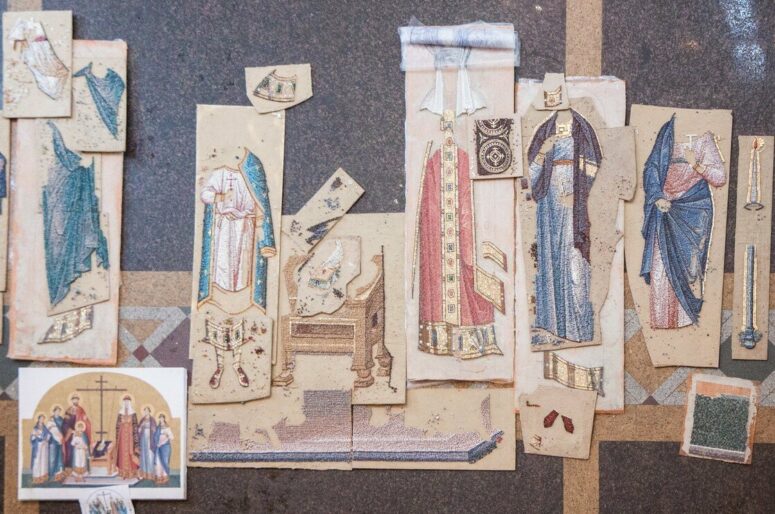
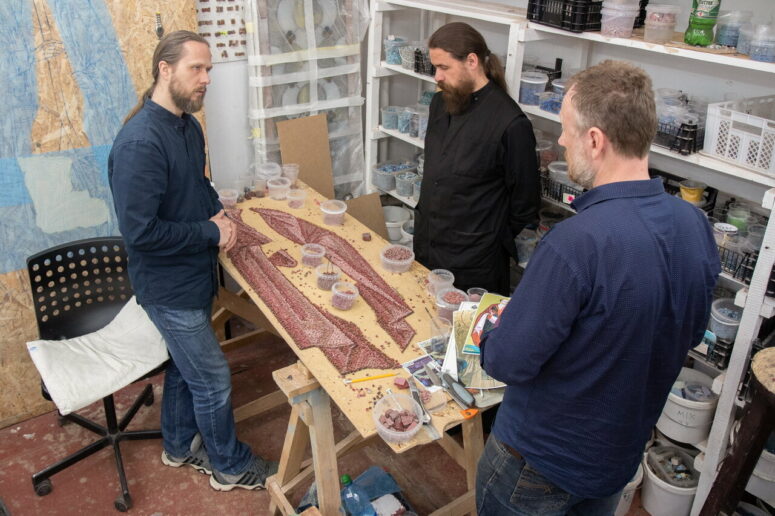
The main goal of the Convent’s mosaicists is to preserve and convey to the beholder the eternal spiritual values. According to the artisans’ personal testimonies, their work contains a constant contact with the Sacred and a personal meeting with God. Aspiring for perfection, an artist puts all his spiritual zeal and love into his work. If he succeeds, a person contemplating it will be certain to sense his effort.
